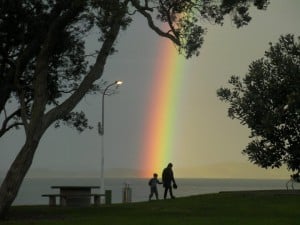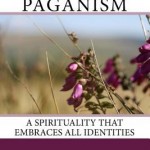
There has been much talk (in the Pagan blogosphere, and on forums and mailing lists) about the problem of an overall Pagan identity erasing and subsuming particular traditions within it, which have their own distinct identities, mythologies, values, and theologies.There is a way in which these groups can come together without those distinct identities being erased, however. If you look at campaigning coalitions (such as the American Civil Liberties Union in the USA, the Accord Coalition in the UK, the Religious Coalition for Reproductive Choice, and so on), they have coalesced to campaign on a specific issue on which they all agree, and set aside their differences only for the purposes of the campaign.
Andrew J Brown explores four different levels of organisation at his blog, Caute, using a model formulated by Arne Naess, one of the proponents of deep ecology.
Level 1, the base of the scheme, consists of the many different religious and philosophical traditions available in the world. They may overlap, but they are not reducible to each other. We could call this level “irreducible diversity” (I like to give different aspects of a model names, because numbers don’t mean much to me). In the space we label “Paganism”, irreducible diversity consists of the different traditions, such as Druidry, eclectics, Feri, Heathenry, Kemeticism, Reclaiming, Religio Romana, Wicca, etc.
At level 2, these groups can form alliances, or common platforms. These can be for a specific campaign purpose, or for forming a bigger grouping for the purposes of interfaith dialogue. These alliances can only be formed on the basis of what the irreducibly diverse groups have in common. The member groups set aside the differences temporarily in order to work together, but they do not sweep the differences under the carpet, attempt to form a synthesis, or otherwise erase the differences.
Problems occur when a level 1 group (such as Wicca) is mistaken for a level 2 group, or when the distinctive identity of a level 1 group is misapplied to another group in the level 2 alliance or common platform. Paganism is a common platform; it is not a level 1 group.
At level 3 of the model, the groups which have formed an alliance have to actually agree to act. We could call this level “planning”. At this point, plans are informed by the beliefs, values, and mythology of each group. Let’s say for example that a group of polytheists and a group of pantheists decide to do a ritual together, perhaps to strengthen the local Pagan community. The polytheists will want to emphasise the distinct identity of any deities that are mentioned. The pantheists will probably be less interested in distinct deities, and more interested in emphasising the immanence of the Divine. At this level, there is lots of disagreement on how to proceed.
At level 4, the action is carried out (so we could call this level “work” or “action”). In our example, a ritual is performed. It very probably won’t be entirely satisfying for either the polytheists or the pantheists, but whatever the purpose of the ritual was, it should be judged by whether that purpose was achieved (in this case, was understanding increased between the two groups?). Afterwards the two groups can return happily to their own style of ritual. They will also evaluate the action in terms of their own values, beliefs, mythology and tradition – to ascertain whether it was helpful, and whether they want to co-operate with the other group on some other project.
The point of this model, as Andrew Brown makes clear, is that
when this process is working at its best it does not result in the reduction of one set of fundamental religious or philosophical beliefs to another. Rather, firstly, it helps those different groups better to work together at the level of common platforms. Secondly, this better, practical working relationship … has the beneficial side-effect of helping these very different groups sit better with their basic differences and disagreements
It also means that diversity can be maintained, which is important because different groups provide different forms of nourishment to their members, and we don’t all want to be munged together into some sort of eclectic soup; and it means we can respect each other’s differences while working together on any aims we have in common (such as, perhaps, respect for the environment).
I posted a link to my previous blogpost “The Pagan umbrella is leaking” on Facebook, and someone commented ‘Why does it matter what you are called, as long as you are a good person?’
It matters because a group name expresses a distinctive identity, philosophy, tradition, set of values, mythology, and community identity. These traditions are ways of being in the world. They are collective projects which explore the question of “How shall we live a good life?” (and what do we mean by ‘a good life’) in very different ways. They each have their own rich collection of source texts and rituals which try to answer that basic question, along with many of the other great existential questions, such as “Why are we here?”
Given the endless variety of religious experience, and the multifarious ways that humans like to connect with the numinous, we simply cannot splurge all the distinct traditions together into an eclectic mix, because that necessary diversity would be lost.
When I was a little kid, I once mixed a lot of different colours of Plasticine (similar to Play-Doh) together. At first, they made a pleasing rainbow of colour – but the more they were mixed together, the more they merged into a rather disappointing olive-brown colour, until eventually there were no distinct colours, only the drab uniform olive-brown.
People often think that if you mix religious traditions together, you will get the pure white light of the original ur-religion (if that ever existed). But quite often, you get brown putty instead. Of course, if you carefully mix two colours, you might get a lovely new colour. But the more colours you mix, the more likely you are to get drab olive-brown…
















